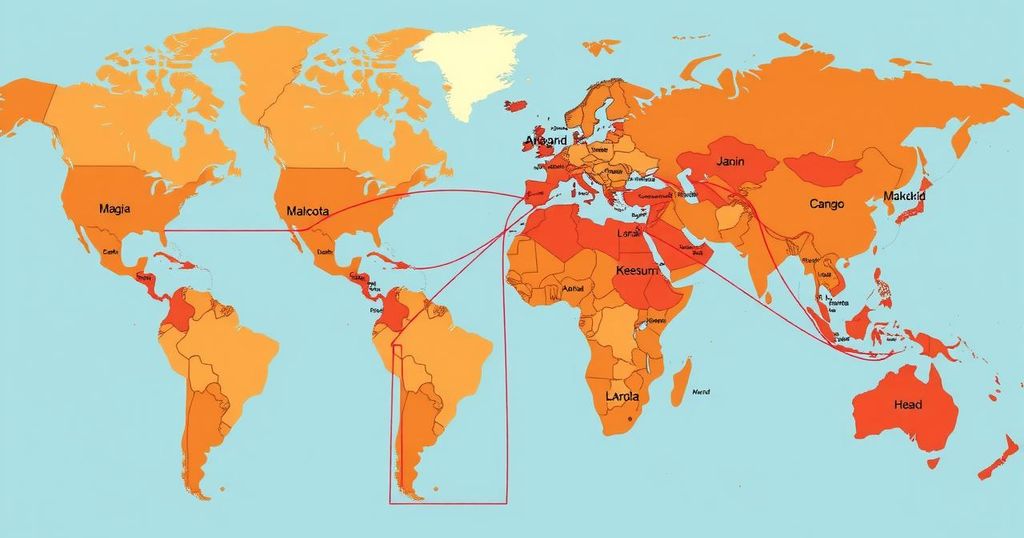Russia has the highest number of illegal migrants, estimated at 12 million. This issue affects many countries including the U.S. and Germany. Motivations for migration vary, and current efforts to eliminate illegal migration have largely failed.
Illegal migration has emerged as a pivotal issue across the globe, with countries attempting to manage its complexities. According to estimates from the World Economic Forum, the total number of international migrants is approximately 272 million, representing about 3.5% of the global populace. Russia stands out as the nation with the highest number of illegal immigrants, estimated to be around 12 million unauthorized residents.
The United States and Germany also experience considerable inflows of illegal migrants, attributed to their economic opportunities and strategic geopolitical positions. The motivations for such migration range widely from economic difficulties and political unrest to environmental challenges and the desire for family reunification. For instance, migrants from Mexico frequently enter the United States in pursuit of improved economic prospects, buoyed by the allure of the so-called “American Dream.”
Attempts by various nations to completely eliminate illegal migration have largely been ineffective over the years. In a notable statement, former U.S. President Barack Obama remarked, “We are and always will be a nation of immigrants. We were strangers once, too.” This perspective aligns with the International Organisation for Migration’s view that “Migration is not a problem to be solved, but a reality to be managed.”
The following is a list of the ten countries with the highest numbers of illegal migrants:
1. Russia – 12 million
2. United States – 11.4 million
3. India – 10 million
4. Bangladesh – 1.2 million
5. France – 1.2 million
6. Germany – 1 million
7. South Africa – 1 million
8. United Kingdom – 925,000
9. Malaysia – 900,000
10. Brazil – 700,000
In summary, illegal migration remains a significant global challenge, with Russia leading in the number of unauthorized residents. The motivations for migration are diverse and often complex, with many individuals seeking better opportunities and safety. Efforts to completely resolve the issue have been largely unsuccessful, indicating the need for comprehensive management strategies. The statistics underscore the global nature of this phenomenon, with many nations grappling with the consequences of migration.
Original Source: globalsouthworld.com




